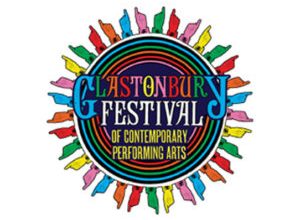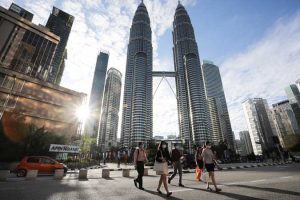Turning trash into textile, plastic into planks

By Brontë H. Lacsamana and Patricia B. Mirasol
Environmental warriors are using green technology to transform plastic waste into sustainable products, such as yarn, bricks, and lumber.
Ahhyarn, a yarn product upcycled from bubble wrap left over from online shopping packaging, was the brainchild of six environmental and sanitary engineering (ENSE) students from the Technological Institute of the Philippines (TIP) led by Vince A. Ilagan.
The yarn can be sold commercially to produce bags, pillowcases, stuffed toys, and the like, providing jobs for weavers in Metro Manila and nearby provinces, with pilot-testing being done at a barangay level.
A combination of the Filipino word “ayan” meaning “there” and “yarn,” Ahhyarn was given the City Environment and Natural Resource Office (CENRO) Choice Award and UnionBank UPBXcellerator Innovation Award.
The TIP team, composed of Mr. Ilagan, Analyn Balog, Aila Marie Bandola, Kim Nicolle L. Divina, Myrriel Sofia B. Mejia, and Ronniello A. Remudaro, was also named the waste management design champion of annual ideation event Climathon Pasig 2021.
With the help of Pasig’s local government and its machine shops, the six ENSE students are collecting, sorting, and processing bubble wrap into Ahhyarn, which was inspired by Adidas how the footwear brand turns polyethylene terephthalate (PET) bottles into thread for shoes.
What makes Ahhyarn different is that it is made from a low-density polyethylene (LDPE) that can jam hard plastic processing machines, said Mr. Remudaro, who hopes to develop a machine especially for LDPE.
Added Ms. Mejia: “We’re hopeful that this concept will alleviate somehow the plastic problem … namely through solid waste management, even if it’s just in one city for now … Pero dapat mag-assemble, mag-tulong-tulong [But we all have to assemble and help each other], in order to make a bigger impact.”
Photo courtesy of The Plastic Flamingo
The students hope to implement their project in two years.
This year, the International Finance Corporation (IFC) said only 30% of plastics in the Philippines are recycled, with the unrecycled waste valued at around $1 billion. In October, environmentalists sued the government for inaction on plastic pollution, namely the delay in releasing a list of non-environmentally acceptable products.
According to TIP, there are only around 3,000 environmental and sanitary engineers in the entire Philippines, compared to over 15,000 practitioners of other fields in engineering.
“I see in the ENSE students, faculty, and personnel that they are really into becoming environmental warriors and I really want to be part of that,” said Ms. Balog in the vernacular.
NOT EASY, BUT POSSIBLE
Like Ahhyarn, eco-lumber providers Green Antz Builders, Inc. (GA) and The Plastic Flamingo (The Plaf) are riding the wave of Filipinos’ heightened consciousness in upcycling.
“During the pandemic, GA saw an increase in waste from plastic packaging, but also an increase in public and commercial will to upcycle and divert more plastic away from the landfills and the oceans,” said Saar Herman, GA’s chief technology officer, in an e-mail to BusinessWorld.
GA uses plastic that would not otherwise be processed by regular waste collectors and recyclers (like complex plastic, or multi-layered, colored plastic), and upcycles these into products like eco-bricks, flood-resilient interlocking pavers, and eco-casts that replace traditional pre-cast walls.
The Plaf, meanwhile, gathers plastics from restaurants, companies, and consumers, and transforms them through an extrusion machine into building materials like waterproof planks.
“The pandemic may not be the sole reason as to why there is heightened interest [in upcycling], but it has proven to take a toll on people to learn about us, the plastic problem, and how upcycling is already present and possible in the Philippines,” Allison V. Tan, The Plaf’s communications and marketing associate, told BusinessWorld in a separate e-mail.
“Turning plastics into planks is not at all easy, cheap, or doable,” Ms. Tan added, “but it is possible.”
The social enterprise has thus far collected 60 tons of plastics — all to be upcycled — on behalf CMA-CGM, a Marseille-headquartered shipping and logistics firm. It has committed to stop 120 tons of plastic waste from entering Philippine waters in the said partnership.
Other partners of The Plaf include P&G, Mondelez, Coca-Cola, FedEx, and Adidas.
“We want to expand our collection network, hopefully also reaching provincial places for more people to practice proper disposal. We’re looking at having additional useful products made from plastic waste,” said Ms. Tan.
GA is likewise looking forward to international collaborations, including one with Holcim’s Circular Explorer (the Swiss-based building brand’s recycling watercraft), which is expected to start by early 2022.
Mr. Herman told BusinessWorld that another potential investor will allow the company to reach other geographies within Southeast Asia.
In 2018, GA co-founder Rommel B. Benig told BusinessWorld: “We want to be part of the Build, Build, Build campaign… We want that idea kasi [that] as we build, build, build, we clean, clean, clean.”
Single-use plastics (SUPs) account for more than 130 million metric tons of the plastic thrown away in 2019, according to this year’s The Plastic Waste Makers Index. SUPs also account for over a third of plastics produced annually; 98% are manufactured from fossil fuels.




